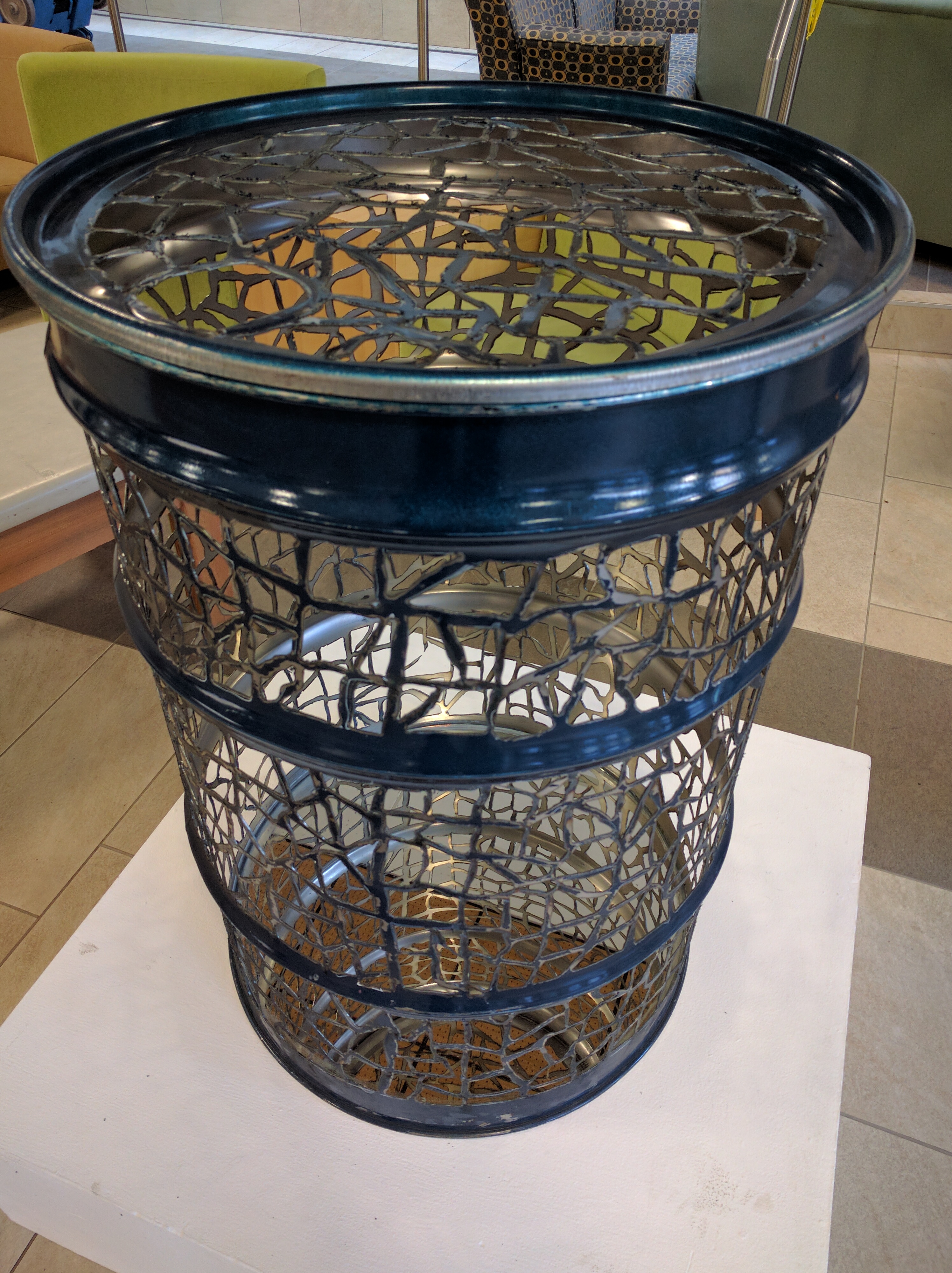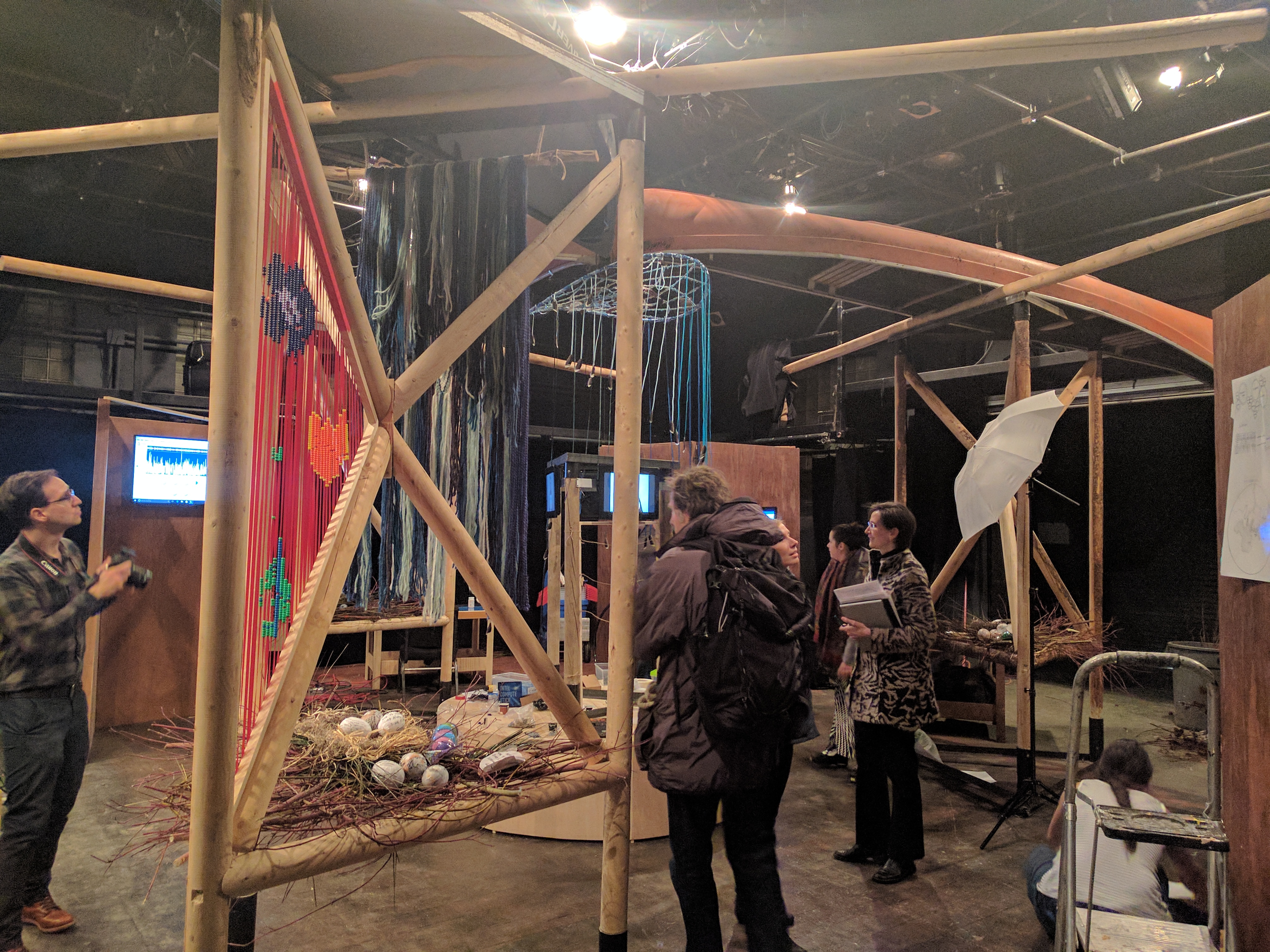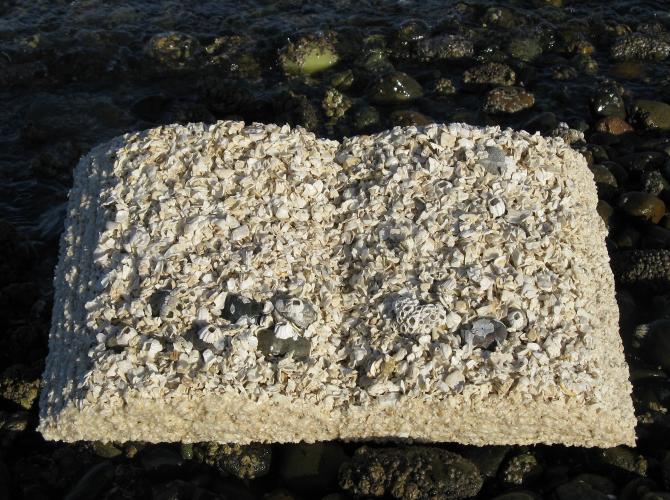Getting Artistic with Sustainability
Sculpture and Extended Media Professor Susan Shantz is bridging the gap between sustainability and the arts in a big way.
By Matt WolsfeldUniversity of Saskatchewan Sculpture & Extended Media Professor Susan Shantz is embarking on her latest in a line of projects that prove sustainability isn’t just for the scientists.
Susan Shantz has always been a lover of the environment. “There’s so much to appreciate in the natural world around us. Much of what we’ve come to appreciate in art has been influenced by things we see in nature. It only makes sense to want to preserve that inspiration.”
Her love of the environment has shown in Susan’s work throughout the years. Her early work Hibernaculum allowed Susan to contrast nature in a state of decomposition against the constructed urban materials used to house the installation. “It was the natural environment I was living in that really struck me as being quite new and different after I moved to the prairie,” says Susan, commenting on her inspiration for Hibernaculum. “[There is] a certain amount of pleasure just being outdoors and working in that kind of space.”
Her subsequent installation entitled Canopy marked a return to nature, exploring the concept of idealized nature and how it is constructed, marketed and packaged. Through the work, Susan asked people to move past terms like “pristine landscape” to establish a more personal connection to the land. Now, as she begins to forge new connections around campus in order to highlight the deeper importance of our surrounding environment, it seems Susan is just as eager to strengthen her bonds with nature as ever.
The Beginning of a Beautiful Friendship

In the fall of 2016, Susan began a fortuitous friendship with the Office of Sustainability through ART*Cycled, a sustainability-focused art installation that took place during Campus Sustainability Week. Students from her senior sculpture classes were connected with surplus university waste and encouraged to create works of art from these landfill-bound materials.
What resulted was a fascinating exhibition of re-conceptualized waste. Centered on a discarded skylight dome protruding from the ground like an unearthed alien spaceship, ART*Cycled featured an array of thought-provoking sculptures that breathed new life into discarded materials.
“I was so glad to hear that Susan and her students were eager to partner on ART*Cycled,” says Matt Wolsfeld, Community Engagement Co-ordinator for the Office of Sustainability and Campus Sustainability Week lead organizer. “I really didn’t know what to expect at first, but after seeing some early renditions of the students’ pieces I knew we were heading towards something fantastic. There’s so much beauty yet to be made out of these discarded objects, and Susan’s influence on her students helped them to start a lot of important discussions about the nature of waste.”
Branching the Connections

As ART*Cycled was occurring, Susan’s collaborations with sustainability were already underway. In early 2016, the University of Saskatchewan’s School of Environment and Sustainability reached out to Susan to help in creating a multimedia art exhibit that would become the centerpiece of their Delta Days travelling display. Alongside Carla Orosz and Iain Rose (both from the university’s Drama Department), Susan helped to construct a stunning compilation of the work that SENS’ and their river delta partners had compiled through their research. The exhibit, a massive structure centered on three canoes suspended in the air to form a triangle – the shape of a delta – included artwork, pictures, videos, and many other elements contributed by the river deltas’ own community members.
“Having objects, structures, and visual materials really animated the display and engaged the audience – [I] could see the excitement and interest of those attending,” said Shantz, who travelled to Cumberland House for the launch of the exhibit. “The display provides a strong focus to gather and articulate community concerns and interests.”
A Time for Leadership
In early 2017, Susan was appointed as a faculty member to the President’s Sustainability Council. The Council, tasked with advising and counseling the President on how to advance a sustainability agenda at the University of Saskatchewan, serves as a forum to discuss campus sustainability challenges and to support students, faculty, and staff to participate meaningfully in the planning and implementation of institutional sustainability initiatives and practices.
“I’m excited to see what the [President’s Sustainability] Council can do,” says Susan. “It’s a great opportunity for some of us outside of the typical sustainability groups to learn more about what’s happening and provide input on how the university can help spread sustainability across a wide range of disciplines.”
Making a Splash with SENS
With the establishment of ART*Cycled as an annual event, the Delta Days travelling exhibit criss-crossing the province, and her membership on the President’s Sustainability Council setting goals for the future, Susan began to set her eyes on expanding her sustainability connections around campus.
After connecting with SENS, Susan found a kindred spirit in SENS/GIWS researcher Graham Strickert. Their shared interest in community-based and –engaged work helped lead to the development of her 2017 course ART 356 – Becoming Water, which will expose senior studio art students to artistic, physical, and scientific perspectives of water. The class will feature numerous field trips to Gardiner Dam, Buffalo Pound, and Cumberland House to intimately connect students with the importance of water in our communities.
“The class is another great opportunity to bridge the worlds of traditional and local knowledge, science, and art,” says Strickert. “Students who participate in the course will learn about and experience water in new ways – going through a process of understanding water through interactions with artists, scientists, First Nation, and Metis people. I hope students will come away from it with some profound experiences.”
One of the most exciting additions to the course is the inclusion of University of New Mexico Professor Emeritus Basia Irland, who will be travelling to join the course at Cumberland House in a mini-residence with Saskatchewan River Delta Stewardship Committee Champion and Metis guide Gary Carriere. Basia’s work focusing on international water issues (especially rivers, waterborne diseases, and water scarcity) is a perfect fit for this course and will add an incredible dimension to the work the students will be doing to draw attention to Saskatchewan’s water issues. During her time in Saskatchewan, Basia also has plans to deliver a keynote address at the Broadway Theatre on the first day of the Wild About Saskatchewan festival and will be blogging about the Saskatchewan River system on the Natural Geographic website.
The connection between art and science has been a welcome addition to Strickert, who has enjoyed contributing his work to a world completely different from his own. “Working with Susan is very inspiring. She has carried me into her world of mixed-media art, shared some of her deep knowledge of art and art history, and she is always willing to dig in and do the hard work when needed. She is very open to new ideas and emergent processes – she’s pushing the boundaries of collaborative scholarship in ways I never thought possible. Susan and I have very different backgrounds, but we’ve really connected around the idea of bridging water-inspired art, science, and traditional knowledge together for transformational change.”
Inspiring Proof of Collaboration and Connection

Susan Shantz provides an active example of how sustainability does not reside in the exclusive domain of the environmental sciences. “Sustainability isn’t the exclusive responsibility of the environmental disciplines,” says Susan. “We’re all responsible with taking action and ensuring that what we do today will not compromise our options in the future. Frankly, I can’t think of a better way to achieve these goals than by combining all of our knowledge and skills together.”
The Office of Sustainability hopes to recreate Susan’s successes across campus through as many departments and programs as possible. To aid this goal, the Gwenna Moss Centre for Teaching Effectiveness has partnered with the Office in its annual Course Design Institute (CDI). The CDI now features an integrated sustainability module intended to help U of S faculty incorporate sustainability concepts into their existing curricula, regardless of their field. Those interested in participating in this year’s CDI (occurring throughout May 2017) must register on their website before April 21, 2017.
Sustainability outside of the environmental sciences is taking off at the University of Saskatchewan with the help of faculty like Susan Shantz. We hope to see work like hers become the norm in the future.
